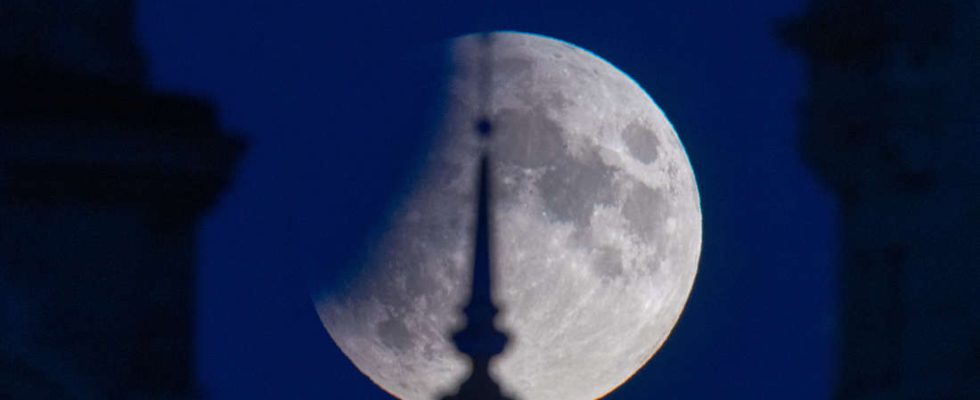The Earth’s umbra passes over the Moon and partially obscures it. A partial lunar eclipse can only occur under certain conditions.
Frankfurt – If the sun, earth and moon are in a line and the shadow of the earth hits the moon, a lunar eclipse occurs. The next lunar eclipse can be seen on October 28, 2023 – however, on this day you will not be able to see total occultation of the moon and therefore no spectacular blood moon. Observers will instead see a full moon that is slightly “nibbled” from one side. The Earth’s shadow will only cover a few percent of the moon’s disk. Nevertheless, the event is worth seeing because it is not an everyday occurrence.
A lunar eclipse can only occur when the moon is full and the Earth’s shadow passes over the moon in space. In most months, the Earth’s shadow passes near the Moon but does not catch it. Things will be different on October 28th, as the partial lunar eclipse schedule shows. The celestial event can be observed wherever the moon is visible in the sky at the right time.
Schedule of the partial lunar eclipse on October 28, 2023
| Moonrise: | around 6:00 p.m. (depending on location) |
| Moon enters penumbra: | 8:00 p.m. (CEST) on October 28, 2023 |
| Moon enters the umbra: | 9:35 p.m |
| Partial lunar eclipse maximum: | 10:14 p.m |
| Moon emerges from umbra: | 10:53 p.m |
| Moon emerges from penumbra: | 12:28 a.m. on October 29, 2023 |
| Moonset: | around 8 a.m. on October 29, 2023 (depending on location) |
| Sources: VdS/timeandate.de |
Partial lunar eclipse in the evening hours of October 28th
After the full moon has risen around 6 p.m. (the time varies by a few minutes depending on where you observe it), there are still about two hours until the Earth’s penumbra touches the moon. At 9:35 p.m. things get interesting because the partial lunar eclipse becomes visible because the moon enters the earth’s umbra. At 10:14 p.m. the full moon is maximally eclipsed – but this year only a small part of the moon’s surface is covered.
A good half hour later the spook is over again – the moon emerges from the earth’s umbra. The moon remains in the Earth’s penumbra until 12:28 a.m. the next day. However, since it is only a slightly grayish veil that covers the moon, it is hardly noticeable.
This is the best way to observe the partial lunar eclipse
But you can see something different before, during and after the lunar eclipse: the full moon will be accompanied by a bright “star” across the sky on October 28th. This supposed star is the second brightest planet in our night sky, Jupiter. It is the largest planet in our solar system.
If you want to observe the partial lunar eclipse, you don’t need any special tools. When the Earth’s shadow begins to cover the full moon, the event can also be seen with the naked eye. However, the lunar eclipse can be observed much better with binoculars or a telescope, especially since the coverage is quite low. Unlike a solar eclipse, you don’t need any eye protection when watching a lunar eclipse. At best, the moon can be uncomfortably bright in a telescope – a moon filter helps, but is not mandatory. If the weather is bad, you can watch the partial lunar eclipse via live stream. (tab)
The world is moving faster and faster, the news is coming thick and fast: Do you always want to be up to date? Then we have a variety of apps ready for you. Simply download your appropriate news app – and that’s how it works.

